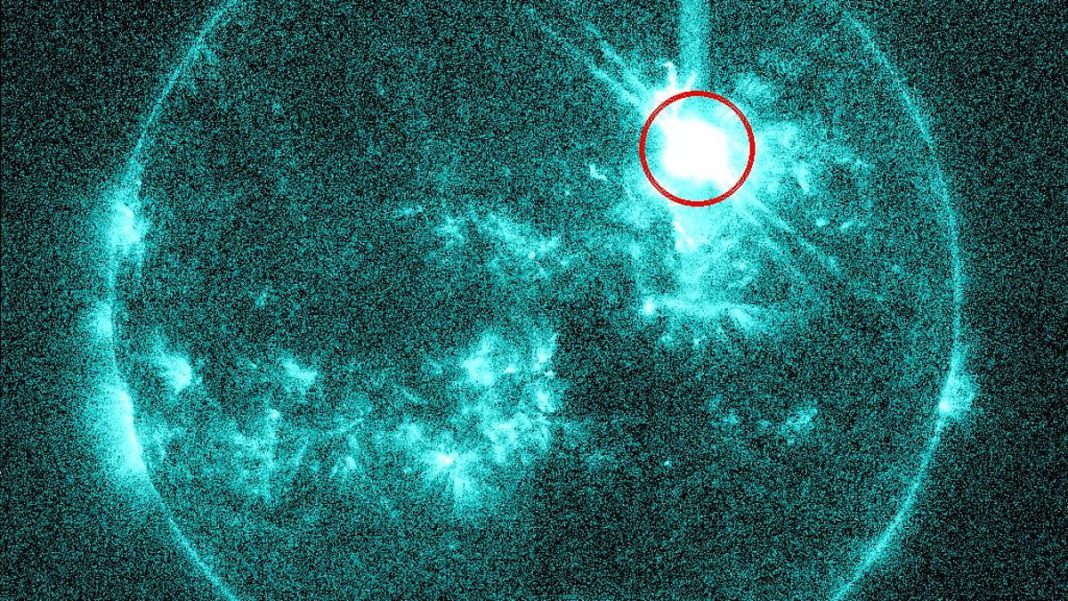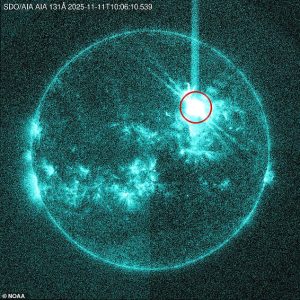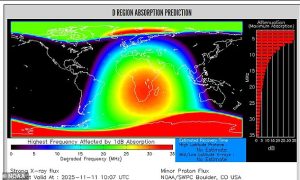Key Takeaways
- Largest solar flare of 2025 (X5.1-class) triggered radio blackouts across Europe and Africa
- Potential geomagnetic storm overnight into Wednesday with auroras visible as far south as Pennsylvania
- 75% chance of more M-class flares and 40% chance of another X-class flare in coming days
The sun unleashed the most powerful solar flare of 2025 today, an X5.1-class eruption that caused immediate radio blackouts across Europe and Africa and could trigger significant geomagnetic storms on Earth.
The massive flare erupted from sunspot AR4274, disrupting aviation, maritime, emergency services, GPS, radar and satellite communications around 5am ET. Space scientist Steph Yardley described the event as “not very common,” noting these energetic particles are strong enough for ground-based detectors to pick up.
Potential Geomagnetic Storm Ahead
NOAA scientists are monitoring a possible coronal mass ejection (CME) moving at approximately 3,000 miles per second. If directed toward Earth, this massive cloud of solar material could trigger a strong geomagnetic storm overnight into Wednesday, disturbing Earth’s magnetic field.
The resulting auroras may be visible as far south as Pennsylvania, Iowa, and Oregon. Power grids, GPS navigation, and high-frequency radio communications could all be affected according to NOAA alerts.
Ongoing Solar Activity Threats
Officials have issued a G3 Watch, warning that another CME from November 10 may arrive on November 11-12. Sunspot AR4274 remains unstable and Earth-facing, with EarthSky reporting:
- 75% chance of more M-class flares causing brief radio blackouts
- 40% chance of another X-class flare with widespread impacts
High-altitude polar flight passengers may face increased radiation exposure, while satellites in low-Earth orbit are vulnerable to electrical disruptions.
Understanding Solar Flare Classification
Solar flares are classified by X-ray brightness into five categories: A, B, C, M, and X – with X-class being the most powerful. Each class represents a tenfold energy increase, with numerical rankings from 1-9 indicating relative strength within each category.
This recent activity follows two other significant flares from the same sunspot – an X1.7-class on November 9 and X1.2 on November 10. Another developing sunspot, AR4276, could produce smaller flares with minor effects.







